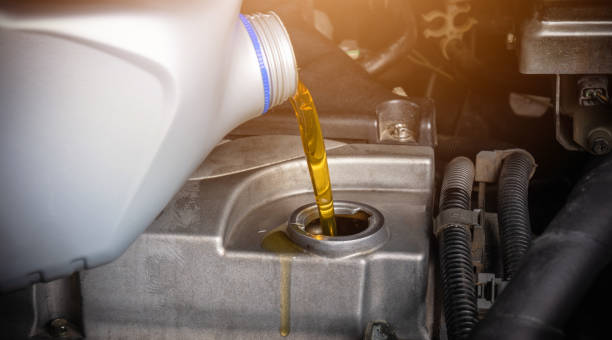The basics of lubricants: how does engine oil work?
In the intricate dance between metal components within an engine, the role of engine oil is akin to that of a maestro directing a symphony. This essential fluid serves as a protective barrier, ensuring the smooth and efficient operation of an engine. To understand how engine oil works, it’s crucial to delve into its composition, functions, and the mechanisms it employs to keep an engine running smoothly.
Composition of Engine Oil:
Engine oil is a carefully formulated blend of base oils and additives. Base oils can be mineral-based, derived from crude oil, or synthetic, created through chemical processes. Synthetic oils are often preferred for their superior stability and performance, especially under extreme conditions.
Additives play a vital role in enhancing the oil’s properties. These include antioxidants to prevent oxidation, detergents to clean and disperse deposits, anti-wear agents to reduce friction, and viscosity index improvers to maintain optimal viscosity across a range of temperatures.
Functions of Engine Oil:
Engine oil serves a multitude of critical functions within an internal combustion engine:
- Lubrication: The primary function of engine oil is to lubricate moving parts. As metal components rub against each other, the oil forms a thin, protective film that reduces friction and wear.
- Cooling: Engine oil helps dissipate heat generated during combustion and friction. As it circulates through the engine, it absorbs heat from components such as the pistons and cylinder walls, carrying it away and contributing to the overall cooling of the machine.
- Cleaning: Engine oil acts as a cleaning agent, picking up and suspending particles, sludge, and other contaminants. The oil filter captures these impurities, preventing them from circulating through the engine and causing damage.
- Sealing: The oil creates a seal between the piston rings and cylinder walls, preventing combustion gases from leaking into the crankcase. This helps maintain optimal compression and prevents fat from entering the combustion chamber.
Mechanisms of Engine Oil:
Engine oil operates through a series of intricate mechanisms to fulfill its functions effectively:
- Hydrodynamic Lubrication: As the engine runs, the rotating crankshaft splashes oil onto the cylinder walls and other moving parts. This creates a hydrodynamic wedge, lifting and separating the metal surfaces, reducing direct contact and minimizing friction.
- Boundary Lubrication: In areas where hydrodynamic lubrication may not be sufficient, such as during start-up or at high loads, boundary lubrication comes into play. Anti-wear additives form a protective layer on metal surfaces, preventing direct metal-to-metal contact.
- Viscosity: The viscosity of oil is crucial for proper lubrication. At lower temperatures, the oil needs to flow easily, ensuring it reaches all parts of the engine. At higher temperatures, it must maintain enough viscosity to provide adequate lubrication. Viscosity index improvers help achieve this balance.
- Oil Pump: The engine’s oil pump is responsible for circulating the oil throughout the engine. It draws oil from the oil pan and forces it through channels, delivering it to critical components. The oil then returns to the oil pan to continue the cycle.
- Oil Filter: The oil filter is a critical component that removes contaminants from the oil. As oil passes through the filter, particles, and impurities are trapped, ensuring that only clean oil circulates through the engine.
In summary, engine oil is a sophisticated and multifaceted fluid that plays a pivotal role in the smooth operation and longevity of internal combustion engines. Its ability to lubricate, cool, clean, and seal is essential for preventing wear, reducing friction, and maintaining the efficiency of the machine. Understanding the composition and mechanisms of engine oil underscores its significance in the intricate symphony of an automotive powerplant.

